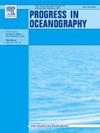Generation of diurnal internal solitary waves (ISW-D) in the Sulu Sea: From geostationary orbit satellites and numerical simulations
Abstract
Our recent study reported the existence of internal solitary waves with the diurnal tidal cycle (ISW-D) in the Sulu Sea, however, the three-dimensional characteristics and generation mechanism of ISW-D are still unclear (Huang et al., 2023). In this work, the spatial–temporal characteristics, generation mechanism and propagating process of ISW-D in the Sulu Sea are first preliminary investigated based on high-temporal-resolution Geostationary Orbiting Satellite (GOS) images and high-spatial-resolution two-dimensional numerical model (MITgcm). GOS images from 2018-2022 are retrieved and a total of 13 pairs of ISW-D packets are found. ISW-D occur at spring tide during May–August, with an average interpacket distance of 198 km and a phase speed of 2.30 m/s. To further knowledge of the generation mechanism and propagation process of ISW-D, the non-linear and non-hydrostatic numerical simulations are conducted. The comparison of ISW-D parameters with GOS images proves the validity of numerical simulations. The results of numerical simulations and theoretical parameters indicate that ISW-D are generated at the sill near Pearl Bank by internal tide release mechanism. Moreover, three sensitivity experiments are designed to investigate the effects of tidal force and seawater stratification on the generation and propagation of ISW-D. The results reveal that the ISW-D is generated by diurnal tides with stronger intensity than semidiurnal tides. Seawater stratification does not influence the generation of ISW-D but modulates the propagation process. Phase speeds from GOS images and theoretical model show a positive correlation between the phase speeds of ISW-D and the intensity of seawater stratification.

 求助内容:
求助内容: 应助结果提醒方式:
应助结果提醒方式:


